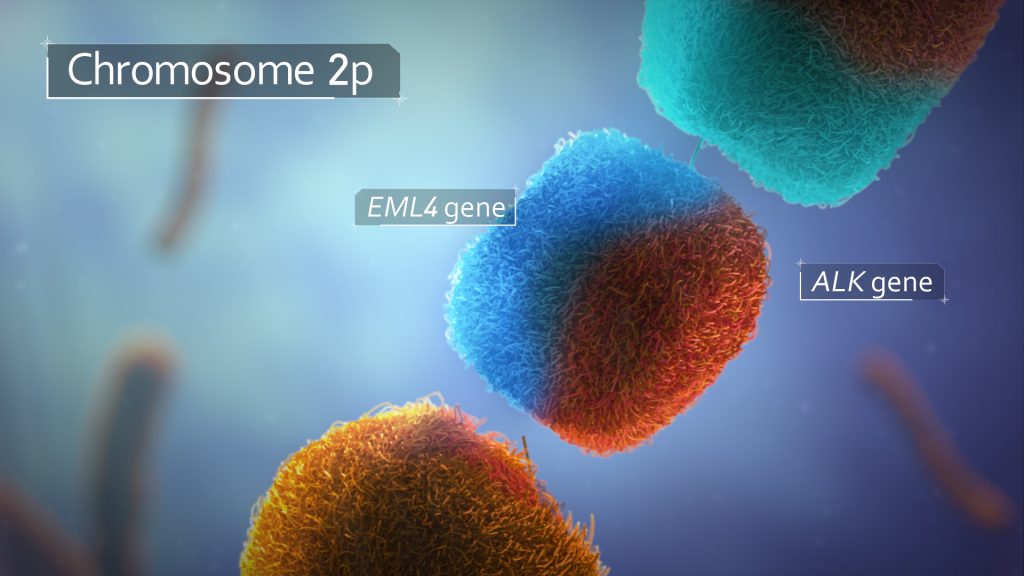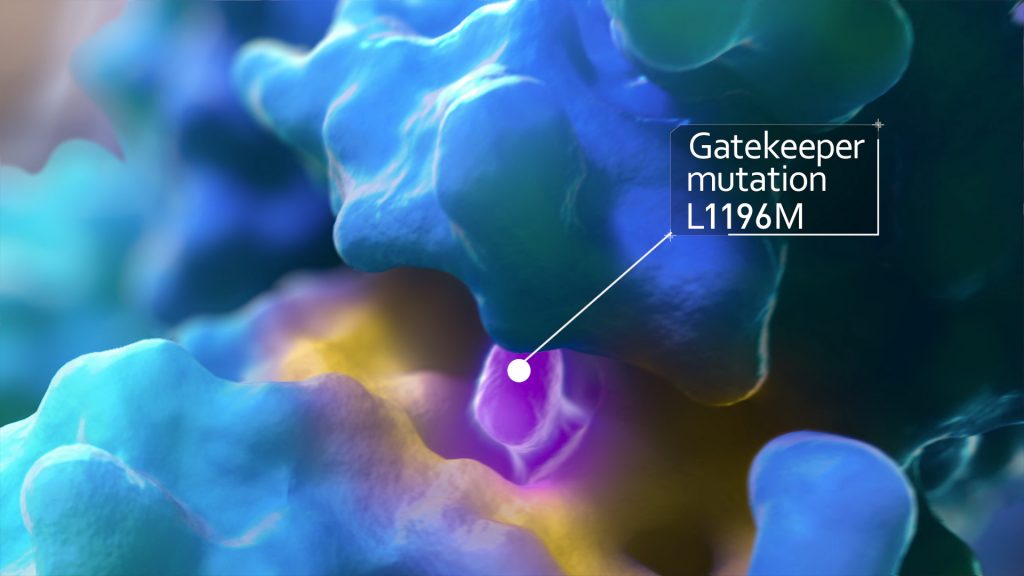A Focus On ALK-Positive Non-Small Cell Lung Cancer
In partnership with Wedgewood Communications, XVIVO developed two videos for Takeda Oncology to discuss lung cancer mechanism of disease and treatments.
This animation takes an extensive and detailed look at the sub-populations of patients who have non-small cell lung cancer (NSCLC), which affects about 198,000 new patients in the United States each year.
Recent research has uncovered many genetic mutations in lung tumor cells that are critical for developing and maintaining the cancer. Some of the more common mutations are EGFR, KRAS, MET, BRAF, ROS1, RET, and EML4-ALK rearrangement (also referred to as an ALKmutation). By identifying these critical mutations, new drugs can be developed to target the mutation and, hopefully, stop the growth of the cancer cells.
The animation discussed the variety of possible mutations seen in lung cancer, with a focus on NSCLCs with an ALK mutation. With so many acronyms to be used in the animation, we were challenged to clearly present the lung cancer types and the possible genetic mutations found in the tumor cells. One approach was to strategically use vibrant and varied colors to differentiate the concepts associated with each acronym – such as the percentage of patients with different driver mutations in NSCLC, the rearrangements on chromosome 2p, and the mechanisms of resistance to ALK inhibitors.


These visual cues are used to help the viewer better understand the importance of genetic modifications in lung cancer and possible mechanisms of resistance to therapies that target these modifications. We want to keep the healthcare provider audience engaged with the highly scientific information that is being presented.